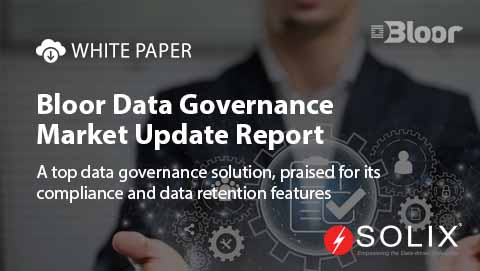Data Catalog Setup A Comprehensive Guide to Streamlined Data Management
Are you wondering how to set up a data catalog effectively If so, youre not alone! We live in a tech fueled ever expanding globe, businesses are overwhelmed with information from various sources. A well-organized data catalog is essential for making data assets more accessible, comprehensible, and usable across your organization. By prioritizing the data catalog setup, you can enhance collaboration, increase productivity, and drive data-informed decisions.
Lets dive into what a data catalog is and how to set it up in a way that maximizes its value to your organization. I recently went through this process myself, and Im excited to share insights that can help streamline your experience.
Understanding Data Catalogs
At its core, a data catalog acts as a centralized inventory of your organizations data assets. Think of it as a library catalog, but instead of books, you are categorizing datasets. A well-structured data catalog not only lists what data you have but also includes metadatainformation about the data, such as data quality, lineage, and access permissions. This combination allows teams to locate and understand data quickly and efficiently.
As I explored setting up my data catalog, I learned that having a clear purpose and understanding the audiences needs are critical first steps. A catalog designed for data scientists might include different features than one intended for business analysts. With this in mind, tailor your catalog setup to fit the specific users within your organization.
Steps to Set Up a Data Catalog
Let me take you through the important steps in a typical data catalog setup, sharing my experiences and practical tips along the way. This journey wasnt without its challenges, but the benefits have been well worth it.
1. Define Objectives and Scope
The very first step is to define the objectives of your data catalog. Are you looking to increase data discoverability, enhance governance, or support compliance Having clear objectives will help guide the rest of the setup process. I remember attending a team meeting where we brainstormed our goals, and it was eye-opening. Different stakeholders had different needs, which needed to be harmonized.
2. Inventory Your Data Assets
Next, create an inventory of your data assets. This could include databases, files, APIs, and any other sources where data resides. Its crucial to make sure every asset is logged, even if it seems trivial. I found that doing an initial inventory opened my eyes to data I wasnt even aware we had! Use tools that can automate data discovery to expedite this process. Your data catalog setup will depend heavily on the completeness of this inventory.
3. Gather Metadata
Once youve compiled an inventory, its time to gather metadata for each asset. This includes details like format, owner, usage stats, and data lineage. Metadata is what makes data discoverable and provides context. While this step can be labor-intensive, consider using automated tools to assist. I learned the hard way that having good metadata pays off in the long runit makes data governance much easier.
4. Organize Data into Categories
After collecting metadata, organize your data into logical categories and groups. This classification should closely align with the needs of your users. For instance, you might create categories based on departments, types of data (structured vs. unstructured), or frequency of use. During my setup, I found that keeping the structure intuitive made it easier for team members to find what they were looking for.
5. Choose the Right Technology
Choosing the right technology to host your data catalog is crucial. Look for platforms that allow you to integrate easily with existing data sources and that can scale with your needs. I discovered that some platforms can automate parts of the data catalog setup process, which significantly reduces human error and effort.
Solix offers robust solutions for data catalog setups. Their Enterprise Data Management provides tools that integrate with various data sources and formats, simplifying the cataloging process while ensuring compliance and governance.
6. Implement Access Control and Security
Security and compliance should be top priorities during your data catalog setup. Assign roles and permissions based on user types to prevent unauthorized access or misuse of data. In my experience, thinking ahead about security requirements saved us a lot of headaches down the line. Be sure to consult with your compliance team to understand regulations that might affect data usage within your catalog.
7. Encourage User Engagement
A data catalog is only as good as its usage. Engage potential users early in the process and seek their feedback. Its vital to train your team on how to use the catalog effectively. Foster a culture of data sharing and collaboration. During our rollout, we held workshops to walk team members through the catalog, which significantly boosted adoption rates.
8. Monitor and Maintain Your Catalog
Once your data catalog is live, its crucial to keep it updated. Set a schedule for regular reviews to ensure that data is accurate, relevant, and compliant with governance policies. A stagnant catalog can quickly become a liability. I allocated resources for ongoing maintenance and didnt underestimate its importancestaying proactive has been key in the success of our data catalog!
Wrap-Up The Value of a Data Catalog Setup
Ultimately, a well-thought-out data catalog setup transforms how organizations access and utilize their data resources. Investing the time and resources in this setup can lead to smarter decision-making, enhanced collaboration, and greater data transparency. As I went through this journey, I felt a growing sense of empowerment knowing that our organization was reaping the benefits of our structured data approach.
If youre considering setting up a data catalog for your organization, I encourage reaching out to Solix. Their expert team can help guide you through the process and address any challenges you might face along the way. You can contact them at 1.888.GO.SOLIX (1-888-467-6549) or visit this page for more information.
Thanks for reading! If you have any questions or want to share your own experiences with data catalog setup, Id love to hear from you.
Author Bio Jamie is an avid data enthusiast who specializes in transforming organizational data strategies. With a focus on hands-on experience in data catalog setup, Jamie enjoys sharing insights to help other professionals harness the power of data in their businesses.
Disclaimer The views expressed in this blog post are Jamies own and do not reflect the official position of Solix.
Sign up now on the right for a chance to WIN $100 today! Our giveaway ends soon‚ dont miss out! Limited time offer! Enter on right to claim your $100 reward before its too late!
-

-

-
 On-Demand Webinar
On-Demand WebinarThe Power of Less: How Data Minimization Drives Data Privacy Compliance
Watch On-Demand Webinar
